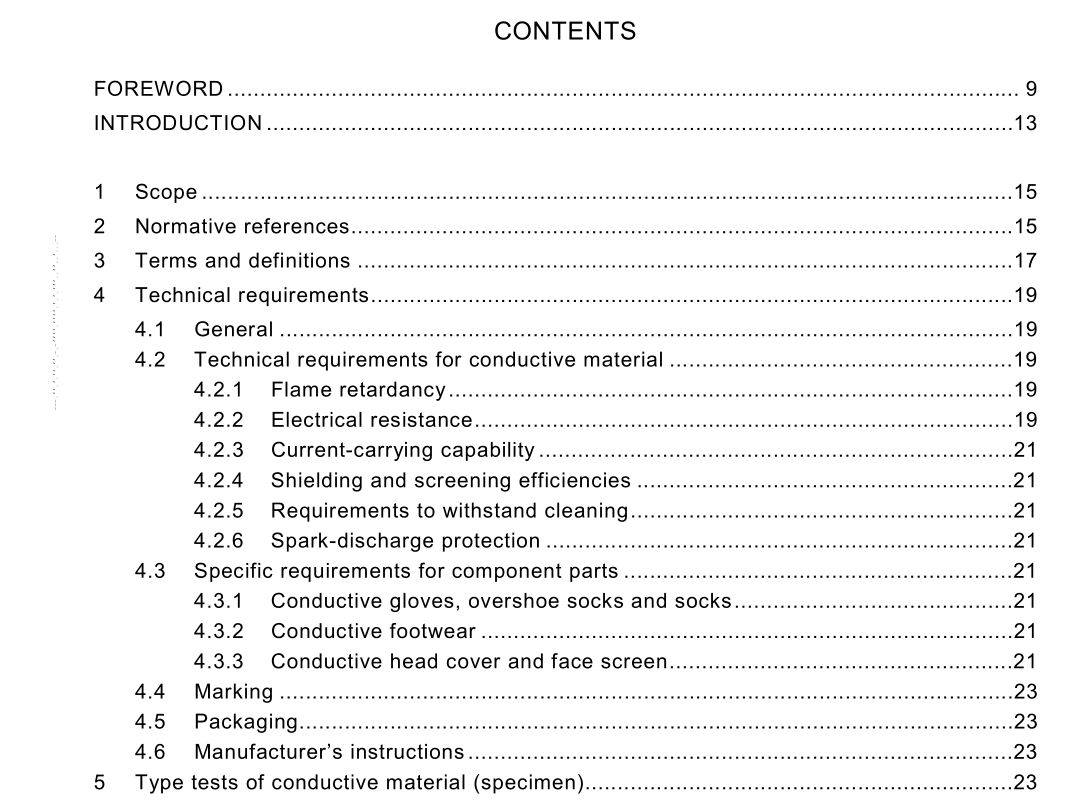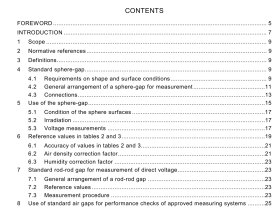IEC 60895 pdf download

IEC 60895 pdf download.Live working – Conductive clothing for use at nominal voltage up to 800 kV a.c. and ± ±600 kV d.c.
1 Scope
This International Standard is applicable to conductive clothing, either assembled from component parts or forming a single complete clothing, worn by (electrically) skilled persons during live working (especially bare-hand working) at a nominal power system voltage up to 800 kV a.c. and ±600 kV d.c. It is applicable to conductive jackets, trousers, coveralls (one-piece clothing), gloves or mitts, hoods, shoes, overshoe socks and socks.
2 Normative references
The following referenced documents are indispensable for the application of this document. For dated references, only the edition cited applies. For undated references, the latest edition of the referenced document (including any amendments) applies. IEC 60050-151:2001, International Electrotechnical Vocabulary (IEV) – Part 151: Electrical and magnetic devices IEC 60050-651:1999, International Electrotechnical Vocabulary (IEV) – Part 651: Live working IEC 60050-826:1982, International Electrotechnical Vocabulary (IEV) – Chapter 826: Elect- rical installations of buildings IEC 60212:1971, Standard conditions for use prior to and during the testing of solid electrical insulating materials IEC 60417 (all parts), Graphical symbols for use on equipment IEC 60456:1998, Clothes washing machines for household use – Methods for measuring the performance IEC 60743:2001, Live working – Terminology for tools, equipment and devices IEC 61318/TR2:1994, Live working – Guidelines for quality assurance plans IEC 61477:2001, Live working – Minimum requirements for the utilization of tools, devices and equipment ISO 2859-1:1999, Sampling procedures for inspection by attributes – Part 1: Sampling schemes indexed by acceptance quality limit (AQL) for lot-by-lot inspection ISO 3175:(all parts), Textiles – Professional textile cleaning and finishing ISO 3290:2001, Rolling bearings – Balls – Dimensions and tolerances
3 Terms and definitions
For the purposes of this International Standard, the following definitions apply. NOTE Further information on terminology is illustrated in figure 1. 3.1 conductive clothing clothing made of natural or synthetic material with integral interwoven conductive fibres, or layers, used to provide electrical continuity between all parts of the clothing and a reduction of electric field [IEC 60743, definition 8.2.7, modified] 3.2 conductive material material composed of metallic threads or non-metallic conductive substances and natural or synthetic threads closely woven, knitted, or layered 3.3 equipotential bonding lead (bonding lead) flexible metallic connection used by the worker to connect or disconnect his or her conductive clothing, bucket or screen, to or from another conductive part to create equipotential bonding NOTE 1 This lead is not an earthing device. NOTE 2 The means of securing or connecting the lead shall be such that under emergency conditions, for example, a fall, the lead can separate. [IEV 651-07-07, modified] 3.4 head cover (hood) part of the clothing, either as a separate item or integrated into a complete garment, that covers the head 3.5 face screen for electrical works protective device made of conductive, solid, or meshed material NOTE It provides electrical continuity with the conductive clothing of the worker and a reduction of electric field to the face, or part thereof [IEC 60743, definition 8.4.3] 3.6 conductive overshoe sock sock made of conductive material and worn over shoe/boot 3.7 garment main body of the clothing consisting of jacket and trousers 3.8 component parts additional elements of the complete clothing such as gloves, socks, head protection, and footwear worn in addition to the main garment and bounded to it 3.9 shielding efficiency base log 10 of the ratio of a voltage without the conductive clothing to the voltage measured at the spot with conductive clothing 3.10 screening efficiency per cent ratio of the total current injected into the conductive clothing to the current flowing in the body 3.11 equipotential bonding electrical connection putting various exposed conductive parts and extraneous conductive parts at a substantially equal potential [IEV 826-04-09]









